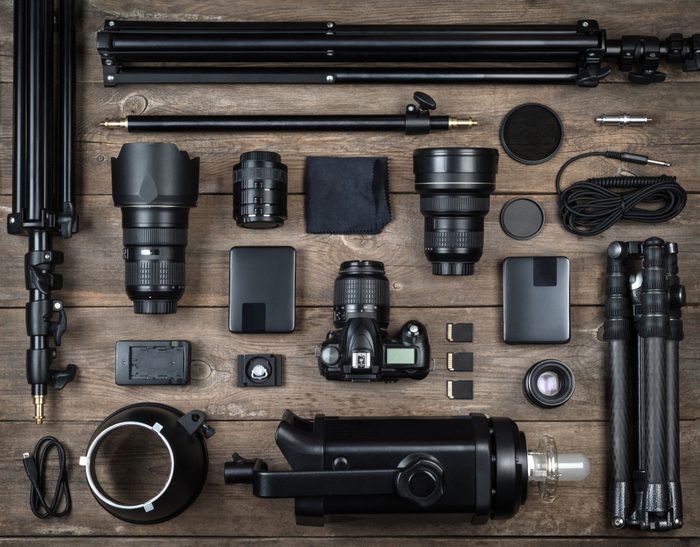
What Key 10 Pieces of Equipment You Should Have in Your Filming Kit
Video Camera or Camcorder
This is an item that is important to ensure you have in your filming kit. Without some form of video camera or camcorder, recording any form of professional-looking footage would not be possible. Though mobile phone cameras have become popular as a video filming tool, the quality and overall finished look of footage from a mobile, compared to that of a video camera or camcorder, will be of a lower quality and lack that final professional look one would expect and strive for with the end product.
DSLR Camera
Having a DSLR camera is another excellent item to have in your filming kit. DSLRs can be used in several ways. Firstly, they are helpful for photography in general and taking photos of potential filming locations to help aid in the pre-production stages of your filming, from storyboarding to locations recess and even support the narrative in which you are aiming to get across to your audience. Secondly, using DSLRs as a secondary filming camera for getting different angles, additional footage, or even timelapse will improve the overall final look of your video. Depending on the kind of video camera or camcorder you choose to use, the quality of the DSLR video may not be as sharp. However, most DSLRs have a
high-quality resolution when filming, so unless you are filming in 4K, the footage taken on a DSLR should be on par with your video camera/camcorder quality.
Tripod
Having at least one tripod (I would recommend having at least two, one for your video camera and one for your DSLR) can make life a lot easier when filming. Having your camera on a tripod helps avoid camera shake. It enables you to create panning or tracking shots that are smooth and seamless, making the audience forget that a person behind the camera is causing those movements. It also means that photos taken while using a tripod have a higher chance of being more precise and sharper than when taken handheld.
Lighting
By making sure you have some portable lighting equipment, you can improve your filming shots if you need any form of additional lighting if you are filming somewhere dark or just on a duller day. Some good options that provide portable lighting could be from a company such as Litepanels or Dedolight. However, if you are on a bit of a budget, you could go with one of the latest popular pieces of lighting equipment: a ring light, as they come at various price points from a low to a high range.
Shotgun Mic
A shotgun mic can be attached to your camera and is small and portable. They are great for capturing audio when filming and can pick up the slightest sound. They are also beneficial for “Run-Gun” documentary-style shooting. Due to their ability to pick up the sound so well, if you are filming outside on a windy day, this could cause dialogue to be difficult to hear. You can get what can be referenced to as a “wind muff” or “dead cat” (which generally comes with the purchase of a shotgun mic) that can go over the mic and cancel out some of the background wind noise.
Audio Recorder
Having an additional audio recorder such as a Zoom Mic is great for interviews. It can also help in dealing with loud background noise. In addition, they are used close up and can capture the dialogue that could be difficult for a shotgun mic in certain circumstances, making the audio clearer and crisper.
Batteries
Again batteries are quite an apparent item to have in your filming kit. It is doubtful that any of your equipment would come without batteries, but it can always be handy to have some spare on hand if the ones you are using get drained, you haven’t completed your filming, then you can swap them out.
Chargers
Chargers are vital pieces of equipment as they repower the batteries and mean you can use them. Again spare chargers are always a plus, but most equipment will come with their chargers provided.
Spare SD cards
SD Cards are where the footage you take is stored. Most cameras will not take photos or record footage if there is no SD card in the camera. Therefore, having spare SD cards is a must if you want to take footage. Video files are a lot larger than just photos, and depending on the quality of your video, it can take up a lot of memory on the card. If you run out of SD memory before you finish your filming, it could be a nightmare, so always make sure you have a few SD cards spare. I would recommend 64 GB or higher for filming with a good read-and-write speed, so it is appropriate for video.
Hard Drive
As stated previously, with the SD cards, video takes up a lot of space and memory, so you will want a good hard drive that can store work with the videos and run the software efficiently when editing. For an excellent hard drive, you would want to check the specifications; if budget allows, you want to look for an SSD that provides high transfer speeds and reliability, for example, a SanDisk Extreme.




